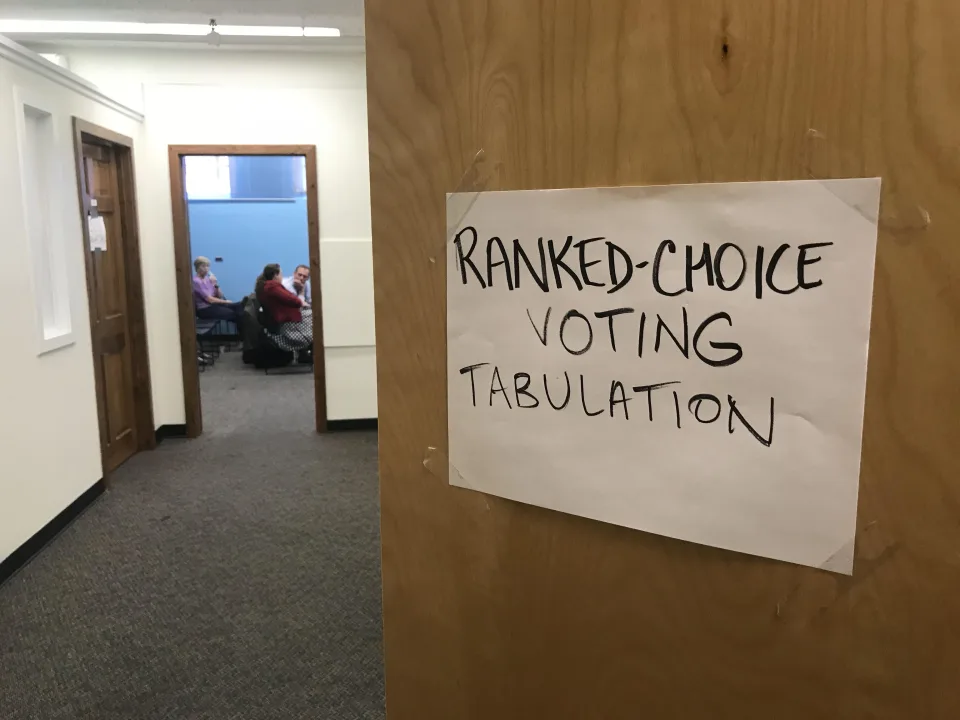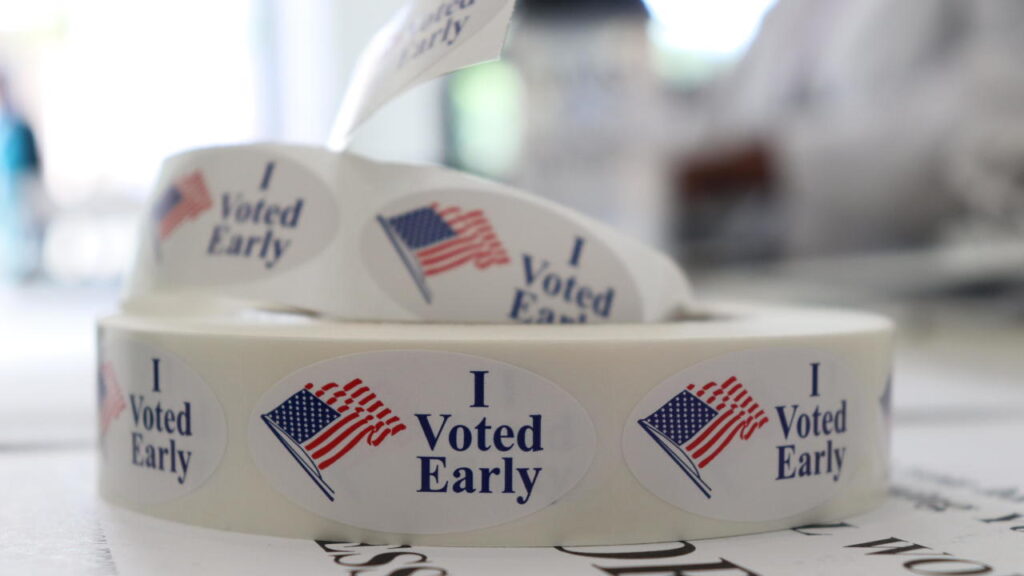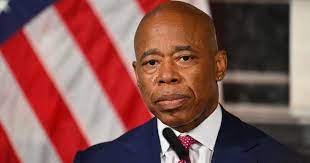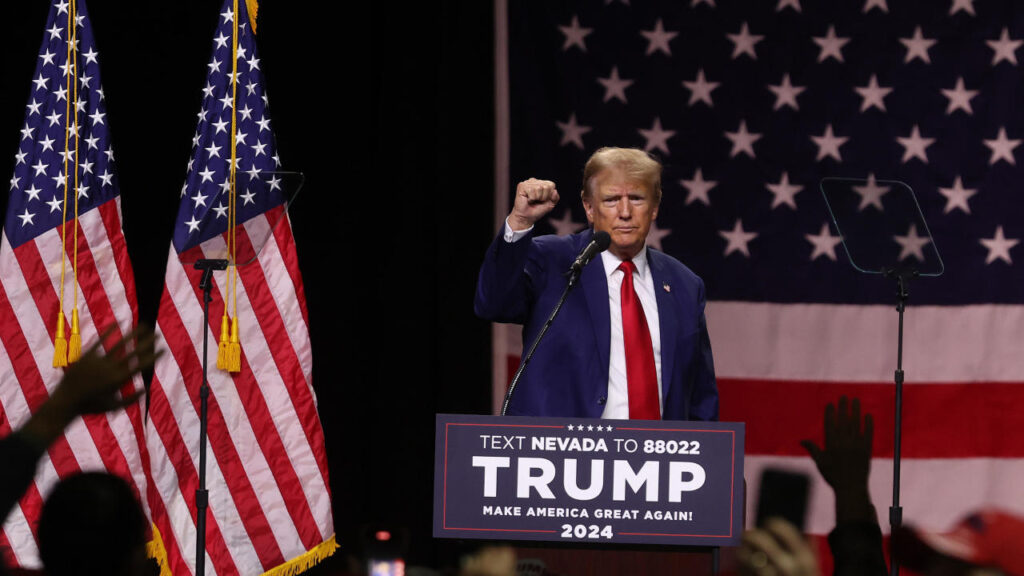A collection of measures that have the potential to drastically alter American voting patterns are gaining traction in Western states at an unexpectedly rapid pace, as the country’s democracy struggles with radicalism, polarization, and a widening gap between citizens and legislators.
Since Maine became the first state to implement ranked choice voting in 2016, the practice of asking voters to rank several candidates according to their preferences has gradually gained popularity. However, a new primary system called Final Five, or sometimes Final Four, is increasingly being used in conjunction with RCV. Final Five sends numerous candidates, from any party, to the general election.
Advocates claim that when combined, these two measures weaken the influence of the extremes and push politicians and candidates to emphasize moderation and compromise, leading to more equitable results that more accurately represent the will of the electorate.
Finally, they argue, the new approach can contribute to the establishment of a government that is more concerned with improving the lives of people than with party point-scoring.
The only state that still uses RCV-plus-Final Four or Final-Five, Alaska, seems to be witnessing some positive changes in its political climate already: Legislators in the state who have accepted the new system say that after years of party animosity, bipartisan majorities now dominate both legislative chambers and are anxious to establish common ground and address the demands of citizens.
Many other states may soon decide to do the same thing as Alaska. A constitutional amendment that would have established an RCV-plus-Final-Five system was adopted by Nevada voters last year; however, the legislation needs to be reapproved by voters the following year in order to be implemented.
Additionally, efforts are being made to have RCV-plus-Final-Four and RCV-plus-Final-Five on the ballots of Colorado and Idaho in 2024. Organizers of these initiatives reported earlier this month that they had garnered 50,000 signatures; however, they still need to gather approximately 63,000 to be eligible. Despite their opposition to reform efforts in the redistricting arena, Wisconsin Republicans convened a hearing in December for bipartisan legislation that would establish RCV-plus-Final-Five, albeit it doesn’t seem likely to pass.
Next year, Oregon voters will determine whether to embrace RCV exclusively. Additionally, this year legislators in Minnesota, Illinois, and Connecticut adopted proposals to investigate RCV, and Connecticut approved a law allowing local governments to employ it.
At the national level, there are hints of interest as well. Just in December, the liberal Center for American Progress and the conservative American Enterprise Institute, two of the top think tanks in Washington, D.C., which frequently take opposing positions, conducted separate panel talks about RCV-plus-Final-Four/Five.
RCV-plus-Final-Five is referred to as “transformational” by Katherine Gehl, the creator of the Final Four/Five method and the founder of the Institute for Political Innovation. (Her group now claims that, by offering voters additional options, sending five candidates to the general election works best.)
Gehl stated, “There’s a lot of pressure on reformers to say, this is not a silver bullet.” And yes, that makes sense.
“I think it’s as close to a silver bullet as you can come,” she continued, nonetheless.
A backlash against reform is developing in the meantime, as numerous states run by Republicans have recently banned RCV. Wisconsin’s legislative leaders were forewarned last month by a coalition of national conservative electoral groups that RCV and Final Five are “intended to dramatically push our politics to the Left.”
Recognizing the procedure
This is the operation of RCV-plus-Final-Four/Five.
Like in a regular election, candidates from all parties run against one another in the primary, and voters select only their top option. Regardless of party, the top four or five finishers move on to the general.
Voters select the winner of the general election using RCV. They complete their ballot by assigning a preference to as many of the candidates as they like.
The candidate who placed last is eliminated and the second-place votes of their supporters are distributed if no candidate receives a majority of the first-place votes. The procedure is carried out again with the next-to-last contender if there is still no candidate with a majority. This keeps going until one person obtains a majority and is crowned the victor.
Proponents of the system claim that while RCV is used in the general election to achieve a more equitable outcome, the Final Four/Five primary gives a voice to a larger percentage of voters. The current method allows a third candidate to win with a minority of votes when two similar candidates jointly obtain a clear majority but divide voters between them.
However, many supporters contend that the two reforms taken together can alter the incentive structure that governs the behavior of elected officials and candidates of all shades, which will alter how they approach their positions.
A growing number of states and districts are reliably red or blue, which means there is no competition in the general election and the important race occurs in the primary. This is problematic because compared to the general electorate, the primary electorate is typically smaller, more politicized, and more extremist.
Critics contend that politicians are currently more concerned with appeasing their base than they are with extending their reach and finding solutions, since they are more concerned with the primary than the general election. These days, evidence supporting this can easily found in Washington and state capitals across the nation.
Final Four/Five moves the important race from the primary to the general election by allowing numerous candidates to proceed. RCV also implies that, even in cases where a voter’s first choice is still unlikely to win, the votes of Republicans in blue districts and Democrats in red districts still count.
All together, this means that candidates are rewarded for focusing on the views of the general population rather than simply a select group of ardent followers. Consequently, it pushes candidates—as well as elected leaders while in office—away from extremism and toward moderation and problem-solving.
“Human beings will go to any lengths to secure and maintain employment,” Final Four/Five designer Gehl stated. “Therefore, accountability is forced if you change who makes hiring and firing decisions—that is, November voters rather than primary voters—and alter the system such that there is genuine competition in November every time, even for incumbents.
An example of the Last Frontier’s success?
An example can be found in Alaska, where voters approved an RCV-plus-Final-Four system in 2020.
U.S. Sen. Lisa Murkowski, a Republican with an independent viewpoint who is distrusted by the party’s hardline wing, was reelected in 2022 when it was first used. Sarah Palin, the extreme Republican former governor, lost to moderate Democrat Mary Peltola in the race for the U.S. House. Peltola retained the position of chief of staff held by her Republican predecessor. (Peltola and Murkowski supported one another).
Meanwhile, voters re-elected conservative Republican governor Mike Dunleavy, indicating, according to reformers, that the system can yield a broad variety of results.
Additionally, more women ran in 2022 than in the five cycles prior combined, demonstrating the positive effects of allowing anybody to run, regardless of party, on the prospects for underrepresented groups.
However, supporters claim that the impact on the way politicians and candidates have conducted their work has been much more pronounced.
Senate Majority Leader Cathy Giessel, a Republican, said at the Center for American Progress event that she lost her 2020 primary, which was conducted under the previous electoral system, to a fervent conservative after upsetting GOP supporters by cooperating with Democrats. Giessel had taken up his position in 2011.
Giessel claimed that in order to reach voters of all colors, her team did not even purchase the voter party affiliation information that most candidates use to identify their supporters when they ran again under the RCV-plus-Final-Four system last year. Giessel regained her seat in part because she was many Democratic voters’ second choice in the general election.
Giessel remarked of the new system, “You’re requiring us as candidates to be much more authentic.” “We are no longer speaking to a political platform. We’re addressing the general public.
Within days following the election, a bipartisan majority coalition was formed, which Giessel currently heads. Members have concentrated on matters of consensus that voters find important, such as increasing money for education, bringing down energy prices, and enacting a balanced budget.
Giessel stated, “We have seen much more collaboration on the budget.” “The process is now much more transparent, with everyone realizing that their input is necessary.”
In turn improving representation, Alaska’s new election system “gave citizens greater choice and elevated the most broadly appealing candidates,” according to an analysis by the center-right research tank R Street Institute in Washington, D.C.
Reformers in Nevada have taken note of Alaska’s early success and are preparing for the next year’s campaign to pass RCV-plus-Final-Five a second time after it was approved with 53% of the vote the year before.
In the Silver State, more than 40% of all registered voters are not a part of a major party, and that percentage is rising. According to Mike Draper, the director of communications for Nevada Voters First, the political action group that spearheaded the ballot initiative, the initial impetus for reform came from these voters’ dissatisfaction at not being able to participate in the state’s taxpayer-funded closed primaries.
There was also the associated worry about politicians catering just to their base, as there was in Alaska and elsewhere.
Without fault of their own, elected officials and candidates lack incentives to… strive toward problem-solving, according to Draper. The main motivation is to maintain their favor with the party or that fringe organization that participated in the primaries.
Prominent members of both major parties, such as Nevada’s two Democratic U.S. senators and Republican governor, are against reform. A judge dismissed a lawsuit filed by Democratic superlawyer Marc Elias in an attempt to prevent the item from being on the ballot in 2022.
“A Leftist scheme”?
Republicans from red states and national conservative organizations have been the most outspoken opponents of reform, despite the fact that elected Democrats in Nevada and a few other blue states have publicly opposed it. They contend that voters would become more perplexed and less confident in the outcome of the election.
Some even perceive a plot that advances. RCV has been described as a “scheme of the Left to disenfranchise voters and elect more Democrats” in a report published in October by the conservative Foundation for Government Accountability.
Recent years have seen the passage of legislation outlawing RCV in the Republican-controlled states of Florida, Tennessee, Idaho, Montana, and South Dakota. An RCV prohibition was also passed by Arizona’s GOP-controlled legislature, but Democratic Governor Katie Hobbs vetoed it.
Conservatives in Alaska are pushing for a ballot initiative that will undo the reform that their state has implemented. Palin, who labeled the system “wack” and blamed it for her defeat by Peltola last year, is heavily involved in the endeavor.
Advocates claim that some Republicans in other states are beginning to show interest, nevertheless.
After extreme candidates like Doug Mastriano in Pennsylvania and Kari Lake in Arizona were nominated by primary voters last year, the GOP lost a number of competitive statewide races. Currently, some party members believe that reform would enable them to promote more candidates who will win.
Matt Germer, an associate director and elections fellow at the R Street Institute, stated, “Even among Republicans, I’ve had my fair share of conversations where they are starting to recognize that the system isn’t putting forward candidates who are necessarily the best general election winners.”
Therefore, there’s a rising movement among Republican elected officials to argue that the current course of action isn’t helping the party expand. We must expand our party in order to attract enough votes to win elections if we are to truly transform our nation.





